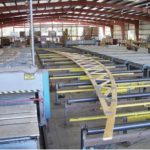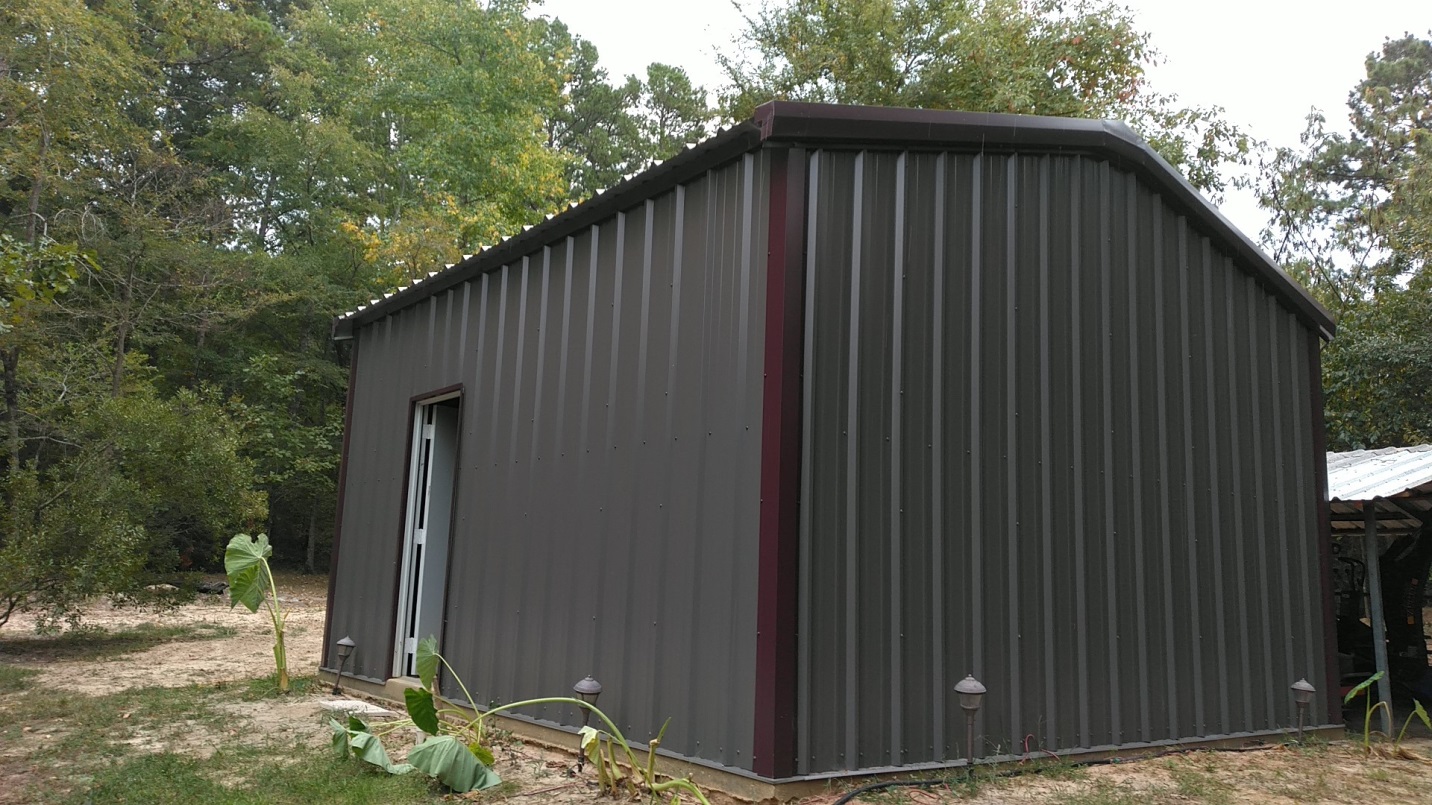Net Zero Post Frame Homes
Energy efficiency has become a huge focus in every type of home construction. Post frame homes can be net zero, just as well as stick frame.
Our environmental commitment allows us to design post frame homes to reduce environmental impact. High performance design and advanced engineering make it easier and more attainable to build a home producing as much energy as it needs through renewable energy, known as net-zero energy.
A net-zero home will be more than a house with solar panels. It’s a house designed to put energy conservation first: from framing to finishing. An airtight structural shell paired with additional options – such as highly insulated wall systems, high performance windows, passive solar design and more – mean any Hansen Pole Buildings’ post frame home can be designed to achieve net-zero energy.
Reader IAN from MIDDLETON writes:
“Mike-
First, I want to let you know how much I have enjoyed reading your blog. I started reading through it topically to answer some of my questions, but because I have been finding so much good information, I resolved to start at the beginning and read through chronologically to make sure I don’t miss anything. Thank you for sharing your lessons learned from decades of experience.
I’ve been exploring options for a cost effective and energy efficient single family home. Reading on your blog has convinced me of the advantages of post frame construction, but I have also been reading about ways to achieve high energy efficiency. In particular, I’m interested in ways to incorporate thorough air sealing and extra insulation (in particular for walls) into a post framed structure. I have found numerous references on the internet to the ways that post frame construction is generally moderately more energy efficient that stick framing, but I have only found a few examples that specifically address trying to achieve a very high level of energy efficiency in a post framed house. The clearest example I’ve found is the following short video that profiles the construction of a net zero single family home in upstate New York: https://youtu.be/PKXNwdvUNj4
My questions for you:
Have you designed a post framed home with high energy efficiency in mind? What kinds of strategies did you use to achieve high energy efficiency?
Have you ever designed a super-insulated post framed home, and if so, how did you incorporate the additional insulation? Some approaches used in stick framing are double stud exterior walls, or supplemental rigid foam insulation between the sheathing and siding (likely not ideal for a steel clad post framed building). Have you seen these or other super-insulation strategies used on post framed buildings?
Finally, have you ever had a post framed home blower door tested for airtightness, if so, how did it perform? Do you have any recommendations for air sealing strategies specific to post frame construction?
Thank you for considering my questions; keep up the good work!”
 Thank you for your kind words. Sadly, most post frame home clients are just not savvy enough to be willing to make an extra upfront investment to super insulate their buildings. I have designed several post frame residential buildings for my own use, so I have learned from mistakes. Also, technologies have improved greatly in recent years, making energy efficient designs more practical.
Thank you for your kind words. Sadly, most post frame home clients are just not savvy enough to be willing to make an extra upfront investment to super insulate their buildings. I have designed several post frame residential buildings for my own use, so I have learned from mistakes. Also, technologies have improved greatly in recent years, making energy efficient designs more practical.
For walls, my current best recommendation would be to use two inches of closed cell spray foam against siding insides. Walls would be framed with bookshelf style girts to create a deep insulation cavity. BIBs insulation would be used to entirely fill the wall cavity. Inside of the girts, covering columns as well, two inches of rigid closed cell foam board would be applied with glue, and all seams sealed. Gypsum wallboard (sheetrock) would be then glued to the foam board. Using rigid foam board inside eliminates any thermal bridging as well as creating a vapor barrier.
With 2×8 bookshelf girts, a wall system of over R-50 could be obtained using description above.
I am not yet sold about creating a warm attic – so I’d use 22 inch raised heel trusses and blow in 20 inches of fiberglass to go R-60 and beyond.
I haven’t seen any post frame air tightness tests, however even 25 years ago (when I was building post frame buildings) we had instances where our post frame homes and commercial buildings were so tight, a window had to be opened in order to close exterior entry doors!
Good Luck! And let me know how it all turns out. I’d love to see pictures of your progress!









You should try to get in on creating an IBC for post frames. Reduce the need for an engineer when building in strict cities. Thanks for all you information
Here is the article I wrote last year for Rural Builder magazine on this very subject:
Prescriptive Building Codes for Post Frame Buildings
Most building code provisions are “prescriptive” meaning they lay out a recipe for the work, with specifications for both the material and the installation.
The IRC (International Residential Code) is a prescriptive-oriented (specification) code with some examples of performance code language. It has been said the IRC is the complete cookbook for residential construction. It is important to understand the IRC contains coverage for what is conventional and common in residential construction practice. While the IRC will provide all of the needed coverage for most residential construction, it might not address construction practices and systems which are atypical or rarely encountered in the industry – like post frame construction. Contrary to the popular belief of some in both the construction side and the inspection side of the table, the IRC does not cover post frame construction – currently only the provisions of the IBC (International Building Code) may be utilized.
Wouldn’t life be simple if one could just open up the IPFC (International Post Frame Code) book and everything was just spelled out? As long as buildings were designed per the IPFC no RDP (Registered Design Professional – architect or engineer) would be required and permits would be readily issued.
If it sounds too good to be true, then it probably is, and here are the reasons why, using the provisions of the IRC as a springboard, since it is the current model of a prescriptive code.
Snow loads would be limited to regions with ground snow loads of 70 psf (pounds per square foot or less). Wonderful for those who do not have to deal with significant amounts of snow, would not help those in mountainous regions of the west, the Upper Midwest or much of the New England states.
The IRC limits story heights to 11 feet 7 inches (and laterally unsupported studs are limited to 10 feet in length). A goodly proportion of post frame buildings have heights greater than this. Now for our ideal PPFC we could pick any height we want, however keep in mind, the greater the value chosen, the more likely it is to negatively impact lesser structures.
Wall deflection is a huge issue already with those who are used to placing girts flat on the outside of wall columns. Under provision such as the IRC the deflection limits for steel covered walls could become H/120, instead of the IBC’s L/90.
The clearspan of a truss could be limited to 40 feet (as in the IRC).
I will interject here there are more than a few permit issuing jurisdictions who currently provide their own prescriptive guidelines for non-RDP required post frame construction. I have personally reviewed several of them and have yet to find a single one in which every point addressed would meet with accepted engineering practice. I have challenged some of them, each of whom made changes to their requirements following my arguments.
Before we even begin to author our IPFC, we should consider the complexities involved in our current industry – everyone seems to have their own version of the correct method to design and construct their post frame buildings. This is without even beginning to factor in the myriad of various structural load combinations.
In the Western U.S. common designs space columns 10, 12 and even 14 feet apart utilizing double trusses and roof purlins on edge. In the Midwest, column spacings of anywhere from 7’6” to 10’ are common with single trusses and purlins again on edge. Continuing East – finds columns spaced at eight foot centers, with truss carriers (headers) attached to the columns supporting trusses on two or four foot centers. Not much continuity, and our IPFC needs to provide answers to address as many scenarios as possible.
Keep in mind – prescriptive requirements are going to have to apply to worst case conditions and to be effective, need to encompass as many geographic areas and climactic conditions as possible.
So what might our basic starting point IPFC look like(remember it will grow exponentially in coverage and complexity over time)?
As clearspans 60 feet and greater require the involvement of an engineer, we could start with spans up to 60 feet. Overall truss heights should be limited to ten feet of rise or less (which would be a 60 foot span at a 4/12).
Wall heights – maybe provide a table with a couple of different eave heights, say 12 and 16 foot for discussion’s sake.
Wind – sorry about the Gulf and Atlantic coasts, but most of the country has a Pult (Ultimate wind speed) of 120 mph (miles-per-hour) or less so you are going to be left out in the breeze. Probably best to design everything for Exposure C, as well as if it was partially enclosed, as many post frame buildings either have some or all of a wall open, or have windows and/or doors which are not wind rated.
Lumber – for simplification’s sake, the weakest values of the four major framing lumber species (Douglas Fir, Hem-Fir, Spruce-Pine-Fir and Southern Pine) will probably have to be used. In most instances this would be #2 Southern Pine for untreated lumber, Hem-Fir for solid sawn columns embedded in the ground.
Some common connections are going to disappear – roof purlins laid flat over trusses every four feet and 2×4 purlins on edge on a single truss every seven to 10 feet with a single nail driven through them into the top of the top chord. Neither one of these pencil out as being about to resist uplift loads. Plan on engineered connectors or perhaps some sort of steel straps.
Some limitations would need to be placed on building length to width ratios, probably only up to twice as long as wide. Endwall door and window openings would need to be limited as well. Maybe to only one-half of an end, with no opening closer to a corner than one-half of the eave height.
Columns most likely the choices would be nailed up, without splices, solid sawn timbers or glulams (with a minimum strength requirement on the glulams – probably of Southern Pine #1 lowers and 1650 msr uppers, as this is the most common combination).
Soil bearing – many post frame designers are assuming a soil bearing capacity of 3000 psf, which in my humble opinion is fairly liberal. Many Western states have significant areas where the soil bearing capacities are 1500 psf or less. If we accept 1500 psf as a base line (sorry most of California), then footing areas would double for many!
The goal is going to be to get jurisdictions to accept the IPFC without amending it, and there are more than a few (especially in the West) who require column holes to be totally backfilled with premix concrete. Others require poured concrete footings of eight inches in thickness.
Not liking the sounds of this? Thinking it is going to change how you build as well as add costs?
If the goal is to make a trade from simplicity (the way you are used to building) to complexity and added expense, then a prescriptive Code is most likely the way to go.
Personally, I feel the true solution is to require all post frame buildings to be designed and have plans and calculations signed by a RDP. This will allow for the fewest changes to the way each of us prefers our buildings to be assembled, as well as easing plans through permit issuing jurisdictions.